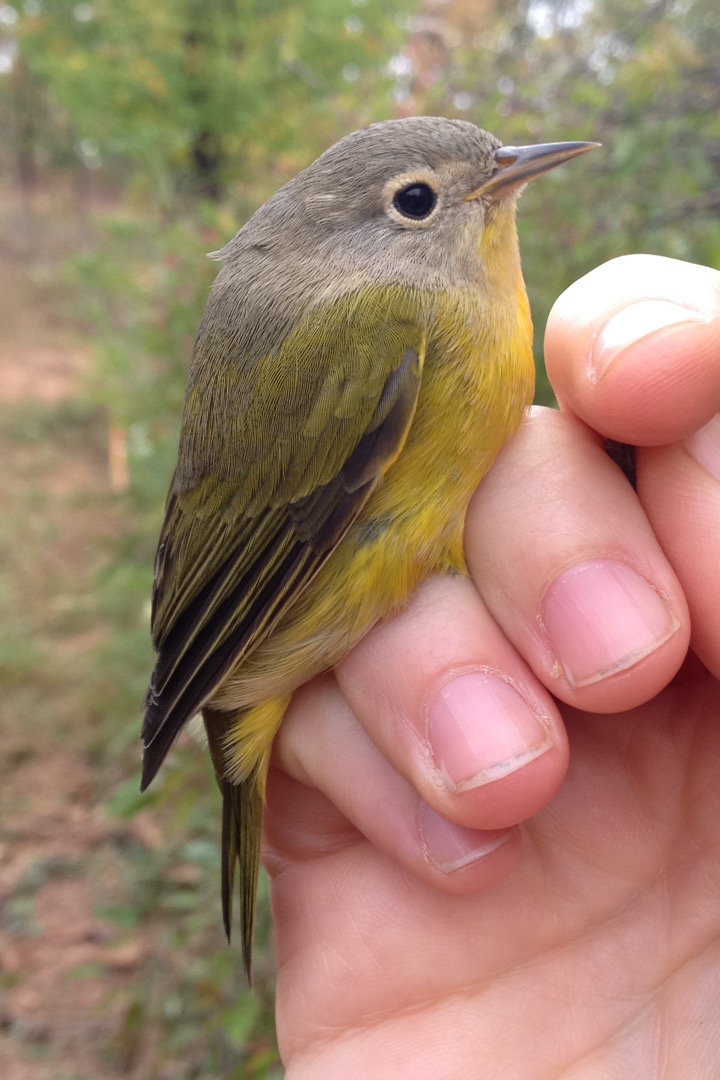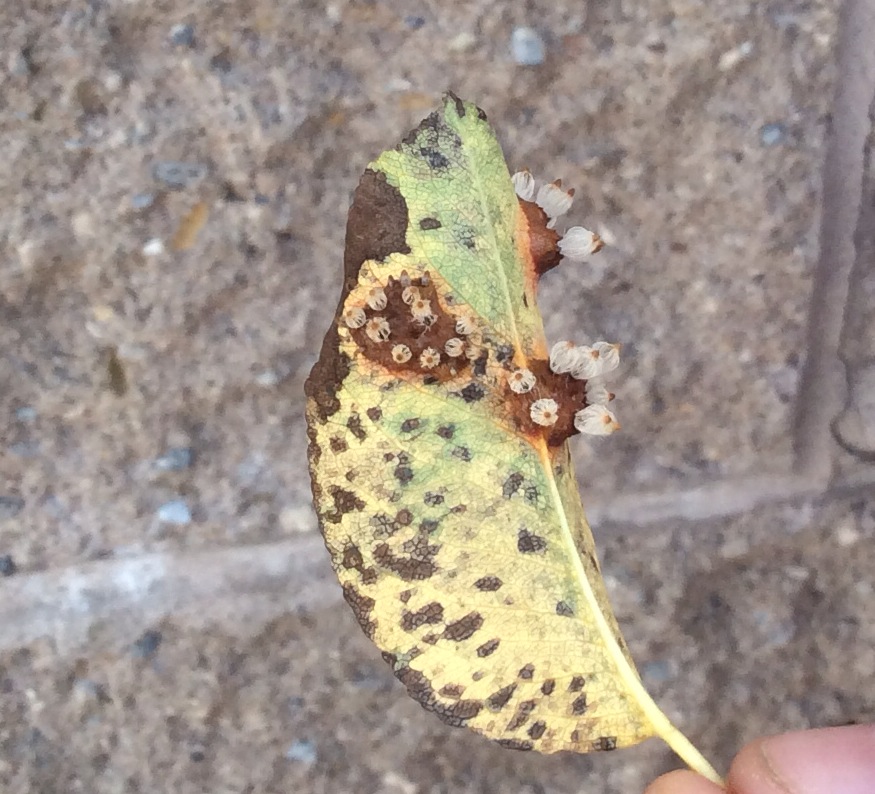Wow! What a (delightful) change in the weather! Temperatures going from the high 20’s/low 30’s to the high teens; N wind; cloud cover. You gotta love it…..It certainly sent a signal to the birds: it’s time to get going! We encountered 6 “new” species for the Fall: Common Loon, Broad-winged Hawk, Golden-crowned Kinglet, Brown Thrasher, Rusty Blackbird, and Dark-eyed Junco.
Visible migration is just that: migration you can actually see. Every day we can infer that migration is going on: one day we don’t see or catch and Blackpoll Warblers; the next we band 35 and see an additional 20 feeding in the trees. Or we hear/see 10 Eastern Wood Pewees today but the next day they’re nowhere to be found. But we never saw these species migrate.
It’s actually sort of awesome to see birds on the move and know that they’re migrating. This morning we saw flocks of Canada Geese on the move – flying south, very high up, in tight formations. These aren’t your shit-on-the-beach local birds moving into local cornfields to feed. These are birds from the far north heading for their Winter home. Mike also picked up a Common Loon on census: high up, flying South.
And there were raptors. On the day we encountered 8 species: Turkey Vulture, Osprey, Bald Eagle, Sharp-shinned Hawk, Cooper’s Hawk, Broad-winged Hawk, Red-tailed Hawk, and American Kestrel. We actually noticed the Broad-wing because of a flock of European Starlings. A large flock of starlings was passing high overhead when, suddenly, they coalesced into a tight band. Whenever you see this you know that there must be an avian predator around. Sure enough, a quick scan turned up the hawk. The band of starling buzzed around the buteo for a few minutes and then peeled off to the NW leaving the hawk to continue S.

When this flock of European Starlings first met up with a Broad-winged Hawk they were fairly loosely spread. -K/ Petrie
The morning just felt “busy” – a continuous (and cacophonous) stream of Blue jays went through the site. Cedar Waxwings (we estimated 250) were everywhere – especially in the Hackberries. No question: things are picking up.
Banded 32:
1 House Wren
1 Golden-crowned Kinglet
1 Ruby-crowned Kinglet
1 Gray-cheeked Thrush
1 American Robin
1 Gray Catbird
1 Brown Thrasher
17 Cedar Waxwings
1 Philadelphia Vireo
1 Common Yellowthroat
4 White-throated Sparrows
1 Dark-eyed Junco
ET’s: 52 spp.
Other Photos:

Both of these male Common Yellowthroats are “older” AHY birds (they were retraps) but there’s a fair difference in their plumages – the one on the left looks younger.

Putting up owl nets – it won’t be long (around Thanksgiving) until we try to catch Northern Saw-whet Owls. -K. Petrie

Toads and other amphibians rue the end of Summer. They will soon be seeking out places to spend the Winter. -K. Petrie
Fern Hill Burlington:
Today flew by! We finally had cooler temperatures which perhaps brought a few firsts for the fall. We had some interesting sightings throughout the morning including an early visit from a Common Raven (who’s arrival was announced by the neighbourhood watch – concerned crows and blue jays.). We had quite a few new visitors to the field station, curious students who are new to the school and bird banding who were excited for the opportunity to learn and release their first bird! Throughout the day and on census Janice observed a total of 32 species of birds with Burlington’s first observed Dark-eyed Junco announcing the much anticipated change in the weather. In total Janice and the YO’s banded a total of 9 birds of 6 species:
2 Nashville Warblers
1 Western Palm Warbler
2 Black Capped Chickadees
1 Warbling Vireo
2 Song Sparrows
1 White-throated Sparrow
ET’s: 32 spp.
Christine Madliger and Chris Harris write:
Chris and I think that leaf fungus you found could be European pear rust (also called pear trellis rust).
https://alanbuckingham.photoshelter.com/image/I0000bxHLbD0Zhd8
European pear rust (Gymnosporangium sabinae). Protruding gall-like growths develop on the underside of infected leaves, beneath the orange patches that appear on the upper surface.








